Illuminati: Facts And History About The Secret Society
Ellen Lloyd – MessageToEagle.com - They worked in great secrecy. Their goal was to create a society without a King and Church.
Their ideas were controversial, and their members were considered so dangerous that society was quickly banned. Some think members of the Illuminati are still active, working in secrecy to create a New World Order.
The Illuminati Order still fascinates and frightens people, but who were these people really, and what were their goals?
In this article, we examine facts and history about the Order of the Illuminati, one of the most dangerous secret societies that ever existed.
How And Why The Order Of The Illuminati Was Created
To understand why the Illuminati society was established, one must first understand how politics and religion influenced Europe in the 16th and 17th centuries.
Our journey takes us back hundreds of years to Regensburg in Germany, where the secret society was born.
The Illuminati society was created on May 1, 1176, by Johann Adam Weishaupt, who was only 26 years at the time, but already a Professor.
Johann Adam Weishaupt (1748–1830), founder of the Bavarian Illuminati. Image credit: Freemasonry
He adopted the name of "Brother Spartacus" within the Order. Weishaupt was fascinated with the current Renaissance ideals and scientific discoveries, such as Isaac Newton's physics breakthrough and Galileo Galilei's astronomical discoveries based on Copernicus's previous theories and studies. People now knew that Earth was not the center of the Universe and our planet orbited the Sun and not the other way round.
Many secret societies existed during this period, and many felt a need to give people the power to decide on important matters. The power and role of the authorities and the Church were questioned. There was a need for a radical change in society, and Weishaupt thought he had the "perfect" solution.
Congress of Vienna, 1814-15
Many believe that the subversive goal of the Illuminati was to form a one world government. The Congress of Vienna was, according to these beliefs, brought about by the Illuminati who hoped to achieve their goal by forming a League of Nations. When Russia refused to join, however, their plan was foiled creating, supposedly, a great deal of animosity towards the Russian powers within the Illuminati rank and file. Image credit: Freemason Info
Weishaupt lectured at the Ingolstadt University in Bayern, and he was the only professor who was not a member of the Jesuit order.
In 1773, Pope Clement XIV suppressed the Jesuits (also known as the Society of Jesus). This allowed Weishaupt to become a professor in canon law. A Jesuit had exclusively held the position up until that point.
In his free time, Weishaupt spent hours discussing new ideas with members of other secret societies.
The Radical Agenda Of The Illuminati
The Illuminati wanted to make fundamental changes in society. Their goals were:
Abolition of all ordered governments
Abolition of private property
Abolition of inheritance
Abolition of patriotism
Abolition of the family (children should be raised by the society)
Abolition of religion
Creation of a world government
Adolph Freiherr Knigge, the most effective recruiter for the Illuminati. Image credit: Wikipedia
The greatest enemy of all was religion, which, according to Weishaupt, prevented progress in society. The aim was to combat religion and foster rationalism in its place.
Needless to say, the Illuminati's ideas and goals were so controversial that the entire Order and its members were soon considered a dangerous threat to society.
The Illuminati Promoted Doctrines Of Equality And Freedom, But Members Of The Order Were Under Constant Surveillance
Order was given to put an end to the Illuminati. Authorities sent agents to infiltrate the society and collect sensitive information that could be used against the Order of the Illuminati.
Weishaupt and the Illuminati gained many followers across Europe
This was challenging because Illuminati members were very cautious and secretive and never undertook unnecessary risks.
When they wrote, they never mentioned the society's name – Illuminati. Instead, they used a unique sign representing their society – a circle with a dot in the middle, a symbol for the Shining Sun.
All members used ancient Greek and Roman names to hide their identity.
The all-seeing eye was a symbol used by the Illuminati.
Ironically, Weishaupt's plan promoted free-thinking and freedom, but his society certainly did not reflect these thoughts, and the Order was anything but democratic. Weishaupt believed constant surveillance of the members created several advantages such as loyalty and eliminated the risks of traitors.
Although Weishaupt's goal was "enlightenment" for its members and society as a whole, its own rules and regulations prevented free thought by its members. The actual workings of the Order involved spies and counter-spies. Each isolated cell of initiates answered to a supervisor that none of the initiates knew. Weishaupt also set specific books and materials that all members had to read.
The Illuminate Gained Many Followers And Must Be Banned
The Church and authorities started to become impatient. The Illuminati became increasingly popular, and the secret society gained many followers.
Weishaupt wanted to create a large organization, but he had to work hard. He had to prevent members of the Freemasons joined the Rosicrucian Order.
Weishaupt had no respect for and disapproved of the Rosicrucian Order that worshipped the occult and alchemy.
"The thought that young men are trying to create gold and other nonsense is unacceptable to me," Weishaupt said.
The Order of Illuminati existed for almost a decade before it was banned and eradicated by the authorities.
In 1784, writings from the Order were intercepted in Bavaria, and the group was declared seditious and banned.
Weishaupt lost his position at the university and fled Bavaria. Once Weishaupt left Bavaria, and the Order collapsed, the Illuminati ended.
In 1777, Weishaupt tried a second time to promote his ideologies. He joined the Masonic lodge "Theodor zum guten Rath" in Munich, but his Illuminati reforms were not welcome and rejected by the Freemasons.
Knowing this, Weishaupt created a quasi-masonic society and recruited members from inside the fraternity. Weishaupt claimed that his system was "pure" masonry.
Weishaupt wrote four books on the Illuminati over a three-year period while in exile. They were A Complete History of the Persecutions of the Illuminati in Bavaria (1785), A Picture of Illuminism (1786), An Apology for the Illuminati (1786), and An Improved System of Illuminism (1787).
Weishaupt died in Gotha, Germany, on November 18, 1830. The society's influence is still felt today partly because of the profound association it formed with Freemasons.
Updated on August 3, 2022
Written by Ellen Lloyd – AncientPages.com
Copyright © AncientPages.com All rights reserved. This material may not be published, broadcast, rewritten or redistributed in whole or part without the express written permission of AncientPages.com
Expand for referencesMore From Ancient Pages
-
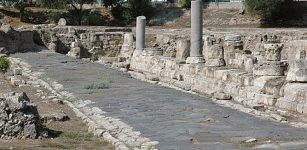 Biblical City Of Tarsus: Excavations Reveal Its Secrets From Paul the Apostle’s Times
Archaeology | Jan 4, 2016
Biblical City Of Tarsus: Excavations Reveal Its Secrets From Paul the Apostle’s Times
Archaeology | Jan 4, 2016 -
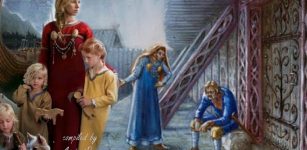 Mother, Father, Child, Marriage And Divorce In Viking Society
Ancient History Facts | Apr 27, 2020
Mother, Father, Child, Marriage And Divorce In Viking Society
Ancient History Facts | Apr 27, 2020 -
 Controversial Hollow Earth Theory – Startling Discoveries And Different Conclusions – Part 2
Ancient Mysteries | Jun 25, 2019
Controversial Hollow Earth Theory – Startling Discoveries And Different Conclusions – Part 2
Ancient Mysteries | Jun 25, 2019 -
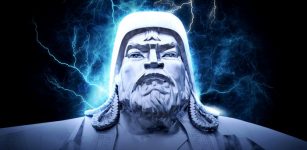 Is The Tomb Of Genghis Khan Hidden And Protected In The Khentii Mountains Because Some Fear It’s Cursed?
Featured Stories | Jul 16, 2021
Is The Tomb Of Genghis Khan Hidden And Protected In The Khentii Mountains Because Some Fear It’s Cursed?
Featured Stories | Jul 16, 2021 -
 Thousand year old Pagan warrior tomb discovered in Poland
News | Aug 23, 2015
Thousand year old Pagan warrior tomb discovered in Poland
News | Aug 23, 2015 -
 Fascinating Gigantic Creatures Today Totally Extinct 13,000 Years Ago Co-Existed With Early Americans
Archaeology | May 8, 2012
Fascinating Gigantic Creatures Today Totally Extinct 13,000 Years Ago Co-Existed With Early Americans
Archaeology | May 8, 2012 -
 Draken Harald Hårfagre – World’s Largest Viking Ship On Its Way To U.S And Canada
News | Apr 27, 2016
Draken Harald Hårfagre – World’s Largest Viking Ship On Its Way To U.S And Canada
News | Apr 27, 2016 -
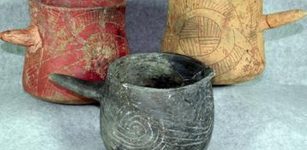 Cocoa, Caffeinated ‘Black Drink’ Widely Used In Native American Societies
News | Sep 8, 2015
Cocoa, Caffeinated ‘Black Drink’ Widely Used In Native American Societies
News | Sep 8, 2015 -
 Advanced Technology Of The Ancients: Artificial Platforms Of Mighty Nan Madol
Civilizations | Sep 14, 2018
Advanced Technology Of The Ancients: Artificial Platforms Of Mighty Nan Madol
Civilizations | Sep 14, 2018 -
 Jersey’s Ancient Faldouet Dolmen Vandalized To Extract Quartz Crystals
News | Nov 10, 2020
Jersey’s Ancient Faldouet Dolmen Vandalized To Extract Quartz Crystals
News | Nov 10, 2020 -
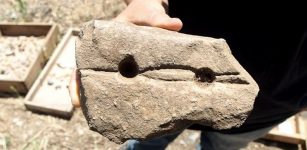 Stone Slab c. 9,000-Year-Old Used In Making Fire Discovered Not Far From Jerusalem, Israel
Archaeology | May 17, 2017
Stone Slab c. 9,000-Year-Old Used In Making Fire Discovered Not Far From Jerusalem, Israel
Archaeology | May 17, 2017 -
 Small House With Beautiful Mythical Frescoes Discovered In Pompeii
Archaeology | Nov 4, 2024
Small House With Beautiful Mythical Frescoes Discovered In Pompeii
Archaeology | Nov 4, 2024 -
 Riddle Of Brazilian Atlantis – Strange Discovered Rocks The World Forgot About
Featured Stories | Jan 28, 2022
Riddle Of Brazilian Atlantis – Strange Discovered Rocks The World Forgot About
Featured Stories | Jan 28, 2022 -
 Ancient Hebrew Inscription Reveals Location Of Biblical Mount Sinai
Archaeology | Nov 21, 2019
Ancient Hebrew Inscription Reveals Location Of Biblical Mount Sinai
Archaeology | Nov 21, 2019 -
 Legend Of Marguerite de Bressieux: Brave Noblewoman Who Sought Revenge For Sexual Assault
Featured Stories | Mar 29, 2020
Legend Of Marguerite de Bressieux: Brave Noblewoman Who Sought Revenge For Sexual Assault
Featured Stories | Mar 29, 2020 -
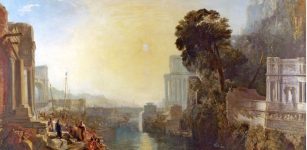 Evidence Of Carthaginian Presence In Northern Europe?
Featured Stories | Jun 18, 2022
Evidence Of Carthaginian Presence In Northern Europe?
Featured Stories | Jun 18, 2022 -
 Ancient Indigenous Carvings On Boab Trees – Time To Rescue Ancient Art Before Trees Disappear
Archaeology | Oct 12, 2022
Ancient Indigenous Carvings On Boab Trees – Time To Rescue Ancient Art Before Trees Disappear
Archaeology | Oct 12, 2022 -
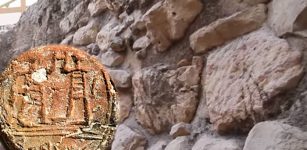 Unique 2,700-Year-Old Seal That Belonged To ‘Governor Of The City’ Of Jerusalem Discovered
Archaeology | Jan 2, 2018
Unique 2,700-Year-Old Seal That Belonged To ‘Governor Of The City’ Of Jerusalem Discovered
Archaeology | Jan 2, 2018 -
 Sibylline Books: Ancient Prophecies Destroyed By Fire
Featured Stories | Feb 17, 2016
Sibylline Books: Ancient Prophecies Destroyed By Fire
Featured Stories | Feb 17, 2016 -
 2,000-Year-Old Completely Preserved Shipwreck With Amphorae Found Near Šćedro Island
Archaeology | May 14, 2024
2,000-Year-Old Completely Preserved Shipwreck With Amphorae Found Near Šćedro Island
Archaeology | May 14, 2024





